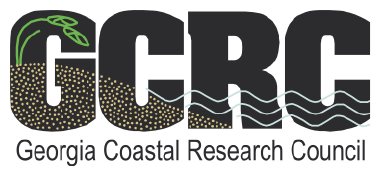Hammock is a term used in the southeastern United States for stands of trees, usually hardwood, that form an ecological island in a contrasting ecosystem. Hammocks grow on elevated areas, often just a few inches high, surrounded by wetlands that are too wet to support them. Hammocks are found on stable sand dunes away from the beach on barrier islands, and on small islands in salt marshes and occur all along the Atlantic Coast and Gulf Coast of the United States.
The GCRC has participated in research conducted on the marsh hammocks of Georgia as well as back-barrier islands (the shoreward facing side of barrier islands). Below are various publications that resulted from this work.
Georgia Coastal Ecosystems – Long Term Ecological Research Project Documents
Hammock Research Summary 2009
M. Alber, C. Alexander, S. Pennings, S. Joye, C. Meile, A. Burd, W. Moore, V. Thompson
Hammock Research Summary 2008
M. Alber, C. Alexander, S. Pennings, S. Joye, C. Meile, A. Burd, W. Moore, V. Thompson
Hammock Research Summary 2007
M. Alber, C. Alexander, S. Pennings, S. Joye
Additional Links
Back Barrier Island Semi-Annotated Bibliography
July 2004
Dr. Clark Alexander and Michael Robinson
Georgia’s Marsh Hammocks: A biological survey
September 2003
Southern Environmental Law Center Report
A Vegetative Survey of Back-Barrier Islands Near Sapelo Island, GA
March 2003
Gayle Albers and Merryl Alber
Proceedings of the 2003 Georgia Water Resources Conference, held April 23-24, 2003, at the University of Georgia. Kathryn J. Hatcher, editor, Institute of Ecology, The University of Georgia, Athens, Georgia.
Report of the Coastal Marsh Hammocks Advisory Council
March 2002
Presented to Commissioner Lonice C. Barrett — Georgia Department of Natural Resources
